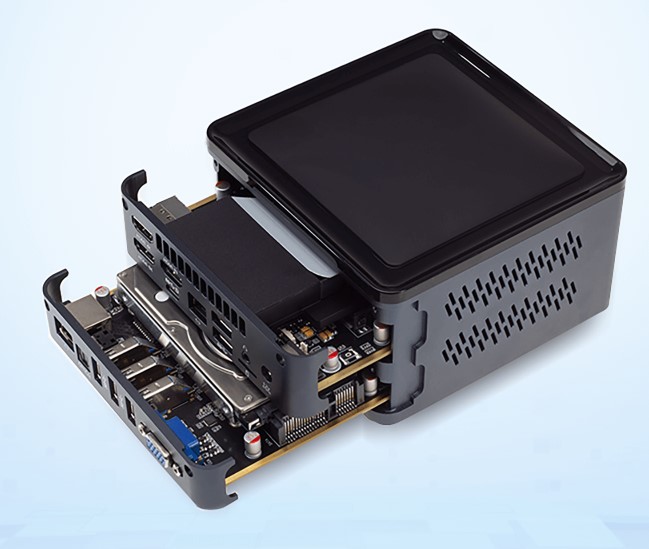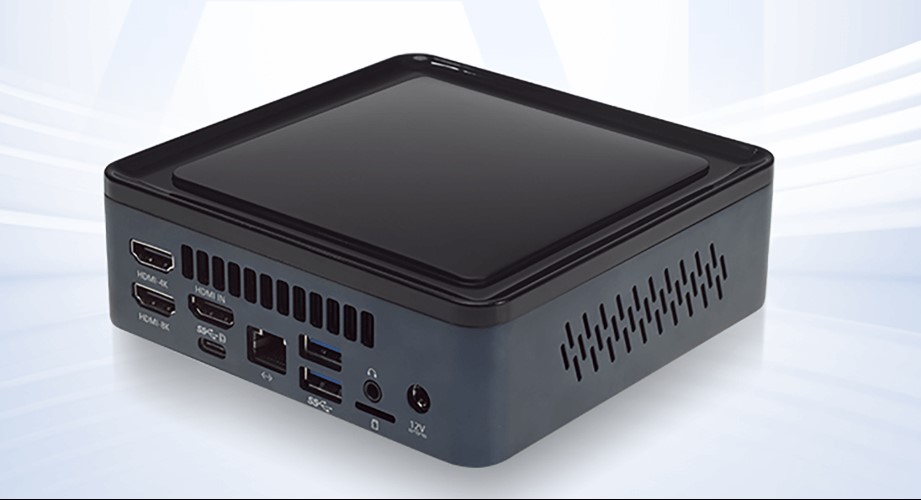Firefly Release Modular Rockchip RK3588 Mini PC
Modular AI Mini PCs
Firefly has revealed two more PCs based on the RK3588 SoC, and both aim to become the brains of your next AI project. The Station P3 looks just like a typical mini PC, whereas the Station P3D is a modular AI PC with interchangeable modules providing extra functionality. These units share many core features in their larger ITX-3588J board but in a smaller package.



Both machines come in machined aluminum alloy enclosures. CNC machined, sandblasted, and anodized, these cases look sleek and not out of place on your desk or in your living room. Inside the case is a machine capable of decoding 8K video at 60fps and H.265/H.264 encoding at 8K at 30fps. This is plenty of power for standard media projects, but AI is where these PCs shine. The NPU offers 6 TOPS of neural computing power for applications such as TensorFlow and MXnet.
| Row 0 - Cell 0 | P3D | P3 |
| SoC | RockChip RK3588 | RockChip RK3588 |
| CPU | Octa-core 64-bit (4×Cortex-A76+4×Cortex-A55) up to 2.4GHz | Octa-core 64-bit (4×Cortex-A76+4×Cortex-A55) up to 2.4GHz |
| GPU | Arm Mali-G610 MP4 quad-core GPU | Arm Mali-G610 MP4 quad-core GPU |
| NPU | NPU computing power up to 6 TOPS | NPU computing power up to 6 TOPS |
| RAM | 4GB/8GB/16GB/32GB LPDDR4/LPDDR4x/LPDDR5 | 4GB/8GB/16GB/32GB LPDDR4/LPDDR4x/LPDDR5 |
| Storage | 16GB/32GB/64GB/128GB/256GB eMMC | 16GB/32GB/64GB/128GB/256GB eMMC |
| Storage Expansion | 1 x M.2 PCIe 3.0 NVMe (2242/2260/2280) | 1 x M.2 PCIe 3.0 NVMe (2242/2260/2280) |
| Row 8 - Cell 0 | 1 x SATA | 1 x TF Card Slot |
| Row 9 - Cell 0 | 1 x TF Card Slot | Row 9 - Cell 2 |
| Ethernet | 2 x Gigabit | 1 x Gigabit |
| Wireless Network | Wi-Fi 6, Bluetooth 5.0 | Wi-Fi 6, Bluetooth 5.0 |
| Display | 1 x HDMI (8K 60fps), 1 x HDMI (4K 60fps) | 1 x HDMI (8K 60fps), 1 x HDMI (4K 60fps) |
| Row 13 - Cell 0 | 1 x DP (8K 30fps), 1 x VGA (1080P 60fps) | 1 x DP (8K 30fps) |
| Row 14 - Cell 0 | 1 x HDMI Input (4K 60fps) | 1 x HDMI Input (4K 60fps) |
| USB | 5 x USB 3.1, 1 x USB C | 2 x USB 3.1, 1 x USB C |
| Power | DC 12V | DC 12V |
| Operating Systems | Android 12, Ubuntu, Custom Linux | Android 12, Ubuntu, Custom Linux |
| Dimensions | 127.6 x 127.6 x 72.5 mm | 127.6 x 127.6 x 45.5 mm |
At a specification level, both machines are almost equal. An extra SATA SSD port, more USB ports, and a VGA connector are all that really separate the Station P3D and Station P3. There is one massive difference, though — the Station P3D has a modular bay attachment. The Station P3D is marketed as a modular AI PC, and the lower part of the Station P3D slides out to replace the expansion module with one of six alternatives. The standard module is as described in the above table, other modules include multiple displays, additional Ethernet ports, Hi-Fi audio, multi USB, and multiple 9-pin serial ports. How this modules connects is a mystery for now. We cannot see any mention of a connection and the sliding nature of the expansion port leads us to believe that it is a connector located deep inside the case, possibly a form of PCIe/USB.
The Station P3 looks like one of the many Intel-based mini PC clones which can be found on Amazon and Aliexpress. The key difference is the RK3588 SoC. This is a powerful SoC with much more horsepower than the Raspberry Pi 4 but historically the RK3588 has featured in boards at a much higher price than the Raspberry Pi. For example, the Khadas Edge 2 Pro uses the RK3588S, and that retails for $339.
The RK3588 is powered by a four core Arm Cortex A76, and four core Arm Cortex A55 with a top speed of 2.4 GHz. This is identical to the ITX-3588J , also from Firefly. The similarities don't end there, as the NPU is identical between the Station P3, P3D and the ITX-3588J. This means that the Station P3 and Station P3D are geared towards AI and machine learning applications which generally require more computing power.
The Station P3D Mini PC is on sale now for $399Youou get 8GB of RAM and 64GB of eMMC storage for this price. It comes with the default expansion module. Pricing for the Station P3 is currently not available.
Get Tom's Hardware's best news and in-depth reviews, straight to your inbox.

Les Pounder is an associate editor at Tom's Hardware. He is a creative technologist and for seven years has created projects to educate and inspire minds both young and old. He has worked with the Raspberry Pi Foundation to write and deliver their teacher training program "Picademy".
-
bit_user Too expensive, IMO. I'd love to have something that's a step up from the Orange Pi 5, but it can't cost more than twice as much.Reply